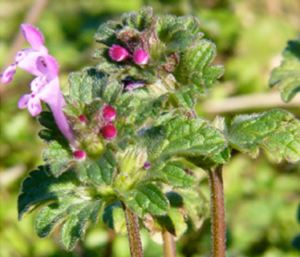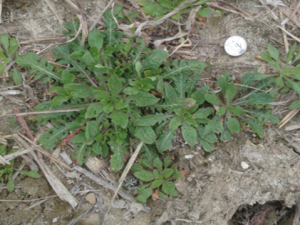March Is Burndown Time (York & Collins)
go.ncsu.edu/readext?401199
en Español / em Português
El inglés es el idioma de control de esta página. En la medida en que haya algún conflicto entre la traducción al inglés y la traducción, el inglés prevalece.
Al hacer clic en el enlace de traducción se activa un servicio de traducción gratuito para convertir la página al español. Al igual que con cualquier traducción por Internet, la conversión no es sensible al contexto y puede que no traduzca el texto en su significado original. NC State Extension no garantiza la exactitud del texto traducido. Por favor, tenga en cuenta que algunas aplicaciones y/o servicios pueden no funcionar como se espera cuando se traducen.
Português
Inglês é o idioma de controle desta página. Na medida que haja algum conflito entre o texto original em Inglês e a tradução, o Inglês prevalece.
Ao clicar no link de tradução, um serviço gratuito de tradução será ativado para converter a página para o Português. Como em qualquer tradução pela internet, a conversão não é sensivel ao contexto e pode não ocorrer a tradução para o significado orginal. O serviço de Extensão da Carolina do Norte (NC State Extension) não garante a exatidão do texto traduzido. Por favor, observe que algumas funções ou serviços podem não funcionar como esperado após a tradução.
English
English is the controlling language of this page. To the extent there is any conflict between the English text and the translation, English controls.
Clicking on the translation link activates a free translation service to convert the page to Spanish. As with any Internet translation, the conversion is not context-sensitive and may not translate the text to its original meaning. NC State Extension does not guarantee the accuracy of the translated text. Please note that some applications and/or services may not function as expected when translated.
Collapse ▲Much of NC’s cotton is grown in no-till or strip-till systems and therefore requires a preplant burndown treatment to control winter weeds and/or cover crops. Mid-March through the first week in April is generally the ideal time for burndown applications.
Numerous species of winter annual weeds can be found. Some of the more common species include the following:
2. Italian ryegrass
3. Henbit
4. Purple deadnettle
5. Common chickweed
6. Mouseear chickweed
7. Cutleaf eveningprimrose
8. Cudweed
9. Mouseear cress
10. Carolina geranium
11. Field pansy
12. Wild radish
13. Virginia pepperweed
14. Knawel
15. Oldfield toadflax
16. Corn spurry
17. Horseweed
18. Horseweed
Most winter weeds are controlled by glyphosate. However, there are some exceptions, and it is for these exceptions that we include another herbicide with the glyphosate. That other herbicide is typically 2,4-D although dicamba (Clarity, others), thifensulfuron + tribenuron (FirstShot, Harmony Extra, others), rimsulfuron + thifensulfuron (Leadoff, others), saflufenacil (Sharpen), carfentrazone (Aim), and pyraflufen (ET) are also options. Flumioxazin (Valor, others) is often included for residual control. Aim or ET will hasten burndown of weeds but in the long run, they typically do not improve control.
Application rates and other information on burndown herbicides can be found in the 2016 Cotton Information publication (http://content.ces.ncsu.edu/cotton-information/weed-management-in-cotton). Table 1. below gives the efficacy ratings for various burndown treatments on our more common weeds.
Glyphosate vs Paraquat. Paraquat is an alternative to glyphosate. However, glyphosate is typically more economical and is often more effective on most species. The exceptions are Carolina geranium (picture 10) and field pansy (picture 11); paraquat is more effective than glyphosate on these species. Carolina geranium is usually adequately controlled by glyphosate + dicamba, glyphosate + rimsulfuron + thifensulfuron, and glyphosate + thifensulfuron + tribenuron. No glyphosate combinations work well on field pansy, and paraquat or paraquat + diuron remain the best options. Diuron added to paraquat will boost control compared with paraquat alone.
Horseweed. Horseweed (picture 17, picture 18), also called marestail, was once controlled well by glyphosate. However, glyphosate-resistant horseweed is now widespread in the Coastal Plain and is beginning to make an appearance in the Piedmont. Burndown combinations of glyphosate + 2,4-D + flumioxazin (Valor, others) or glyphosate + dicamba (Clarity, others) + flumioxazin have been our standard recommendations. The suggested rates of 2,4-D or Clarity are 2 pt/acre and ½ pt/acre, respectively. This rate of 2,4-D is higher than needed for other weeds but typically is more consistently effective than lower rates. Dicamba may be more effective than 2,4-D, especially with later applications when the weeds are beginning to shoot up. Glyphosate plus Sharpen is also an effective treatment for horseweed although the longer waiting period between application and planting for Sharpen is problematic for some growers.
Most horseweed emerges in the fall. Emergence declines or ceases in the winter but additional emergence can occur in April and May. For this reason, we suggest a residual herbicide (typically Valor) as part of the burndown to control later-emerging horseweed. Valor also gives some residual control of other weeds, Palmer amaranth in particular, going into the growing season.
Wild Radish. This species (picture 12) is often not adequately controlled by glyphosate alone, especially if it attains much size. 2,4-D is the preferred material to mix with glyphosate for radish control although glyphosate + dicamba should also be adequately effective.
Italian Ryegrass. Glyphosate has long been the preferred herbicide to burndown ryegrass (picture 2). However, we are beginning to see instances of glyphosate-resistant ryegrass, especially in the Piedmont. Where one expects resistance in ryegrass, the alternative approach is paraquat applied twice. One application of paraquat is usually not adequate whereas two applications, two or more weeks apart, typically work well. Diuron added with the first application may boost control.
Cover Crops. Glyphosate is the material of choice to kill wheat or rye cover crops. If clover or vetch is mixed with the wheat or rye, one needs to include dicamba or 2,4-D with the glyphosate. Vetch is adequately controlled by either 2,4-D or dicamba whereas dicamba is the better material on clover.
One of the goals of a cover crop, in addition to erosion protection, is suppression of summer weeds and moisture conservation. Greater weed suppression and moisture conservation will be obtained with greater biomass produced by the cover crops. Hence, growers may want to allow the cover crop to grow later into the spring to produce more biomass. Even so, it is still a good idea to kill the cover crop a couple weeks ahead of planting to avoid excessive moisture depletion by the cover crop. A good stand of cover crop usually suppresses winter weeds well. However, if the wheat or rye cover crop is thin and winter broadleaf weeds are present, especially horseweed, one can apply 2,4-D or dicamba in March and allow the cover crop to continue to grow before terminating it later with glyphosate.
Waiting periods. There is no waiting period between application of Aim or ET and cotton planting. Labels for thifensulfuron + tribenuron products (FirstShot, Harmony Extra, others) specify a 14-day interval between application and cotton planting. Labels for dicamba-containing products (Clarity, others) specify accumulation of 1 inch of rainfall followed by a 21-day waiting interval. Rimsulfuron + thifensulfuron (Leadoff, others) requires a 30-day waiting period. Labels for products containing 2,4-D specify a 30-day interval between application and cotton planting although growers have learned that the intervals can easily be shortened to 14 days if soil moisture is good.




















